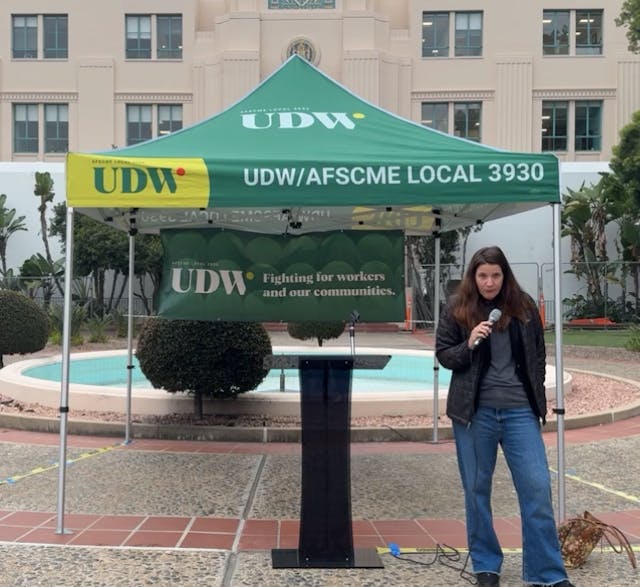Latino Population Growth No Boon for Chicano Studies Programs

By official projections, next year, Latinos will surpass whites as California’s largest ethnic group. The children of Mexican immigrants account for a lot of that growth. They’ve also been enrolling in college at record numbers. But these students see themselves differently than earlier generations. And that’s posing a recruitment challenge to university programs that grew out of the Chicano movement of the 1960s.”
In 1969, a group of Mexican American academics gathered at UC Santa Barbara. They drafted a plan to begin establishing university Chicano Studies departments.
This was a time when Mexican Americans were marching for political recognition across the West, holding Vietnam War protests and high school sit-ins. They called themselves Chicanos. Today the term commonly describes someone of Mexican origin or descent who is living in the United States. But it also evokes that political movement. During the push for civil rights, calling yourself Chicano identified you as part of the proud, sometimes even militant, struggle against second-class status.
“The push for Chicano Studies came from students who were involved in the Chicano movement,” said Isidro Ortiz, a professor at San Diego State University’s Chicano Studies department, one of many established at California universities in the early ’70s following the Santa Barbara summit.
The department flourished well into the ’90s. Even into the last decade. Today, things are looking different.
“It’s a small crisis, in terms of the department’s history,” Ortiz said.
Last semester, the department fell short of its enrollment target for the first time in Ortiz’s memory. It’s also falling short this semester, even though more than a quarter of the university’s students are Latino. Ortiz and other administrators have been trying to figure out what’s going on, and why a record number of young Latinos on campus – mostly Mexican American — hasn’t translated into more students taking Chicano Studies. One of their theories is that “students in many cases don’t identify as Chicanos, as did the generation that created this department, but rather identify as Mexicanos,” Ortiz said.
Many of the Mexican Americans on university campuses today are the children of the large wave of immigrants who came in the 1980s and 1990s, well after the heyday of the Chicano movement.
At San Diego State University, Ortiz suspects a growing number of them identify as undergraduate Sandy Chavez does: something other than Chicano. And they might not even have a strong sense of what Chicano means in a political, historical context.
“A lot of people say Latina, Chicana. I don’t even really know the distinction between them,” said Chavez, a junior and the daughter of Mexican immigrants.
“I don’t know, when I think of a Chicano I think of somebody who grew up in the streets of East L.A,” said Ernesto Limon, another undergraduate.
Jorge Mariscal is a professor at UC San Diego, where he said student interest in Chicano Studies is also low.
Though activism within the young Mexican American and broader Latino community remains strong today, “maybe that term is not what’s appropriate for unifying a mobilization of young people in 2013,” Mariscal said. That’s a stance that has inspired plenty of debate among academics.
The decline in Chicano Studies enrollment is not true everywhere. It has been reported that in Arizona, where Chicano and Mexican American Studies programs also had been suffering from declining interest, efforts to ban the programs in public schools have sparked a renewed interest.
UCLA recently added a Ph.D. program in Chicano Studies.
At San Diego Mesa College, a two-year community college, enrollment actually grew 40 percent between 2007 and 2011, said Professor Alessandra Moctezuma. She said her students find a lot of relevance in Chicano courses as a way of understanding, for example, today’s youth political movements around immigration reform.
“So whether you identify strictly with the term or not, maybe it’s not as important as understanding the import of that history and how it applies to our activism today,” she said.
She did say one reason for the high enrollment on her campus might be that her students are fulfilling general education requirements before moving onto four-year campuses, where many students — facing a weak job market — choose majors that prepare them for careers, such as business or biology.
That’s the recruitment challenge for Chicano Studies departments such as San Diego State’s, where Latino students are a large and growing contingent but, like Sandy Chavez and Ernesto Limón, increasingly view themselves as part of the mainstream.
By official projections, Latinos will surpass whites next year as California’s biggest demographic group, due in large part to the children of Mexican immigrants.
“We should be in a position to be able to capitalize on those numbers,” said Isidro Ortiz, the Chicano Studies professor. “And I think we will be able to, provided we can solve this puzzle.”
To solve it, he said the department might retool its curriculum so that courses include other Latino nationalities. The faculty has discussed the possibility of doing what other Chicano Studies departments have done, and change its name to include a broader term like “Latino.”
Adrian Florido reports for the KPBS Fronteras Desk. This article was reprinted from The California Report.






